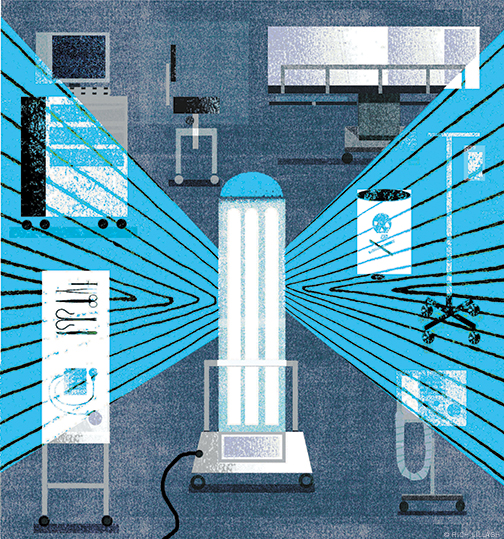
Hospital care and antibiotic drugs are indispensable bulwarks of modern medicine—and perennial sources of medical risk. In combination, they can lead to serious infections like Clostridium difficile, or C. diff, a bacterium that inflames the colons of some 500,000 patients annually in the US, roughly 15,000 of whom die, according to the CDC. But a recent experiment led by David Pegues, a professor of infectious diseases in the Perelman School of Medicine, highlights a method for cutting that infection rate.
Pegues and his colleagues illuminated the hospital rooms of discharged cancer patients (a high-risk group for C. diff infection) with a portable source of UV light, whose germ-killing properties they hoped would eradicate C. diff bacteria on room surfaces before the next patient arrived. Over a 12-month period, the incidence of inpatient C. diff infections in these rooms declined by 25 percent compared to the previous baseline, even as infections rose by 16 percent in non-study rooms.
Considering the cost of managing C. diff, the result was compelling enough for the Hospital of the University of Pennsylvania to implement the experimental protocol on a hospital-wide basis. It purchased three UV germicidal irradiation devices and hired 3.5 environmental-services associates to operate them. In a paper published in October in Infection Control and Hospital Epidemiology, Pegues and his colleagues estimated the cost of the program at about $295,000 for the first year (including acquisition of the equipment), and $195,000 for the second year. They estimate that the program has averted somewhere in the realm of $350,000 to $1.5 million annually in costs for managing cases of hospital-acquired C. diff.




